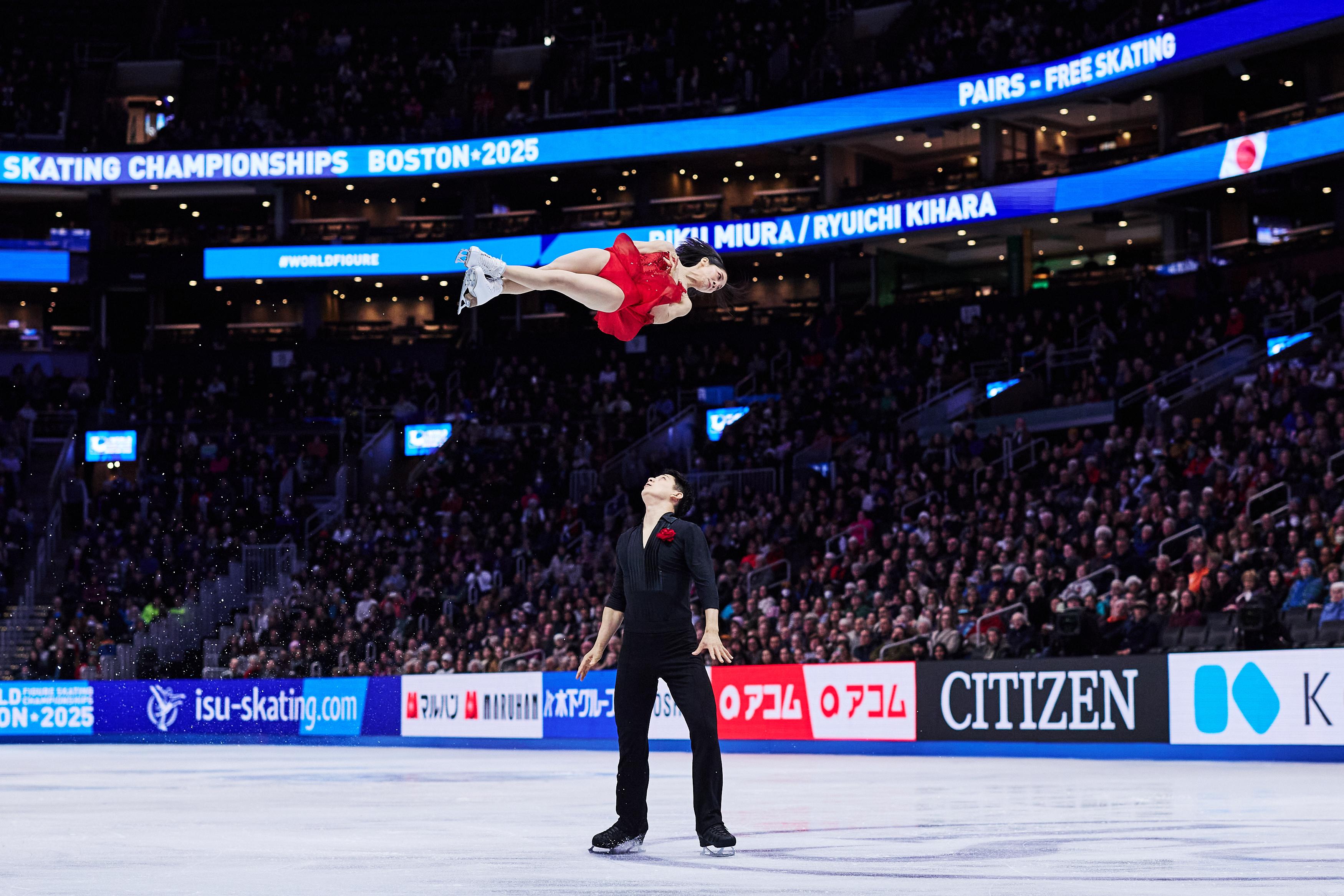FIGURE SKATING
New to Figure Skating? Start With These 5 Must-Know Moves
11 Jul 2025
Figure Skating is unlike any other sport: where athletic skill meets musical storytelling on a blade just 4 mm wide.
Skaters fly through the air, spin at impossible speeds, lift their partners overhead, and glide through intricate choreography, all while performing to music in dazzling costumes.
If you are new to the sport, here are five key elements you will see again and again. Get to know these, and you will be watching like a seasoned fan in no time.
The Axel Jump
The Axel is one of the most famous - and most difficult - jumps in Figure Skating. What makes it special? It is the only jump that takes off facing forward, adding an extra half-rotation in the air. So, when a skater lands a triple Axel, that’s actually three and a half spins before landing.
Done well, the Axel is big, bold, and beautiful - high off the ice, far in distance, and smooth on the landing. You will see double or triple Axels in every senior and junior singles program, as they are a required element at that level.
Fun facts:
• Invented by Axel Paulsen (NOR) in the 1880s
• First triple Axel landed by Vern Taylor (CAN) in 1978
• Midori Ito (JPN) was the first woman to land a triple in 1988
Skaters to watch:
• Ilia Malinin (USA): the only skater to land a quad Axel in competition
• Amber Glenn (USA): one of the few women performing a triple Axel
• Kaori Sakamoto (JPN): known for her powerful and flowing double Axel
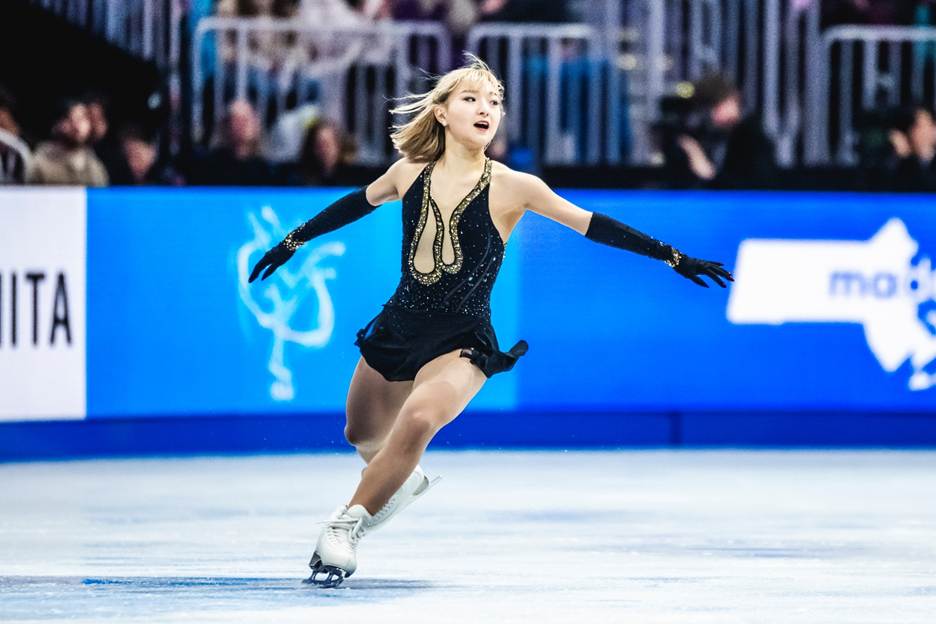
Kaori Sakamoto (JPN) in the take off edge position for the Axel jump at the ISU World Figure Skating Championships 2025 in Boston (USA) ©ISU
The Salchow Jump
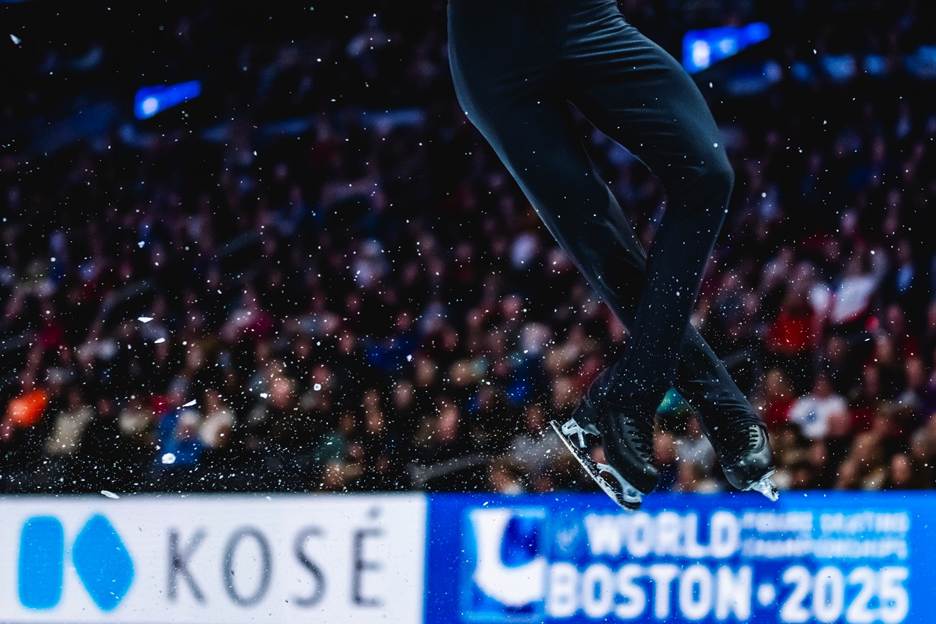
Perfect feet position for the Salchow jump at the ISU World Figure Skating Championships 2025 in Boston (USA) ©ISU
Pronounced “SOW-kow,” this jump is an edge jump - no toe pick needed. Skaters take off from the inside edge of one foot and land on the outside edge of the other. A clean Salchow has smooth take-off, full rotation, and a graceful exit.
Invented more than a century ago, the Salchow remains a staple in both men's and women's programs. It is often used in jump combinations, and you will regularly see it performed as a triple or even a quad at the senior level.
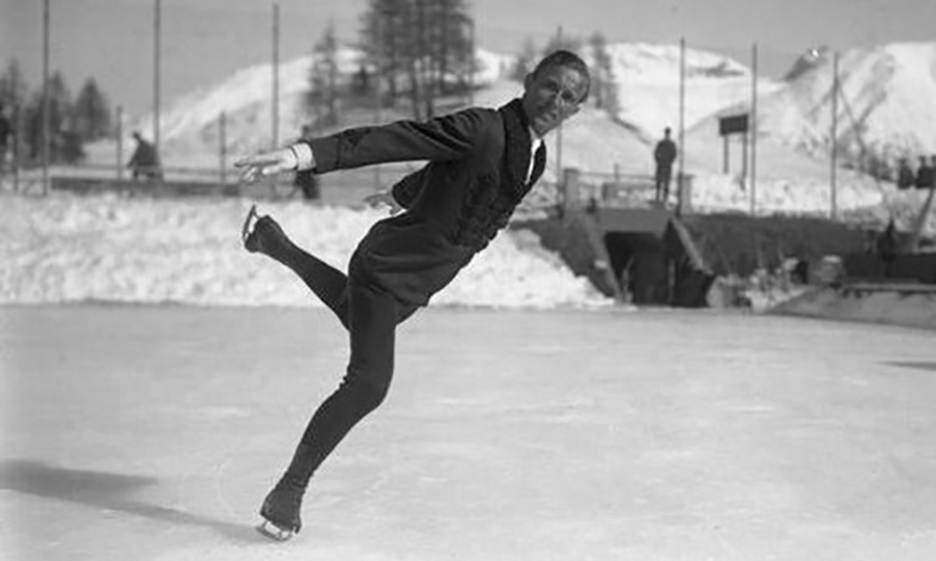
Ulrich Salchow (SWE) performing his Salchow jump in the early 1900’s
Fun fact:
- It was created by Swedish legend Ulrich Salchow in 1909.
The Twist
One of the most spectacular elements in Pair Skating, the twist is a true crowd-pleaser. The male skater throws his partner into the air, she rotates multiple times above his head, and he catches her mid-air before gently setting her down on the ice.
It is fast, risky, and technically complex. A great twist has height, speed, and a soft, secure landing. Some teams add difficulty with a split position in the air or by having the man lower his arms before the catch.
Most senior-level pairs perform triple twists, and a few push the envelope with quads, though they are still rare.
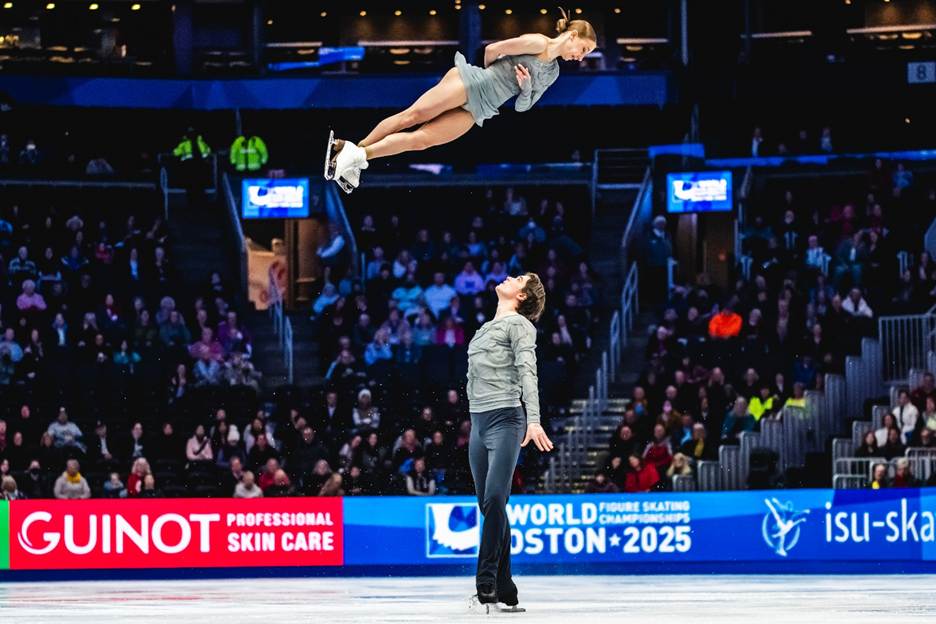
Ekaterina Geynish and Dmitrii Chigirev (UZB) performing the twist at the ISU World Figure Skating Championships 2025 in Boston (USA) ©Getty
Fun Facts:
- The first quad twist was landed by Marina Cherkasova/Sergei Shakhrai (URS) at the 1977 ISU European Championships.
Pairs to watch:
• Minerva Hase/Nikita Volodin (GER)
• Anastasiia Metelkina/Luka Berulava (GEO)
Both Pairs are known for height, precision, and world-class triple twists.
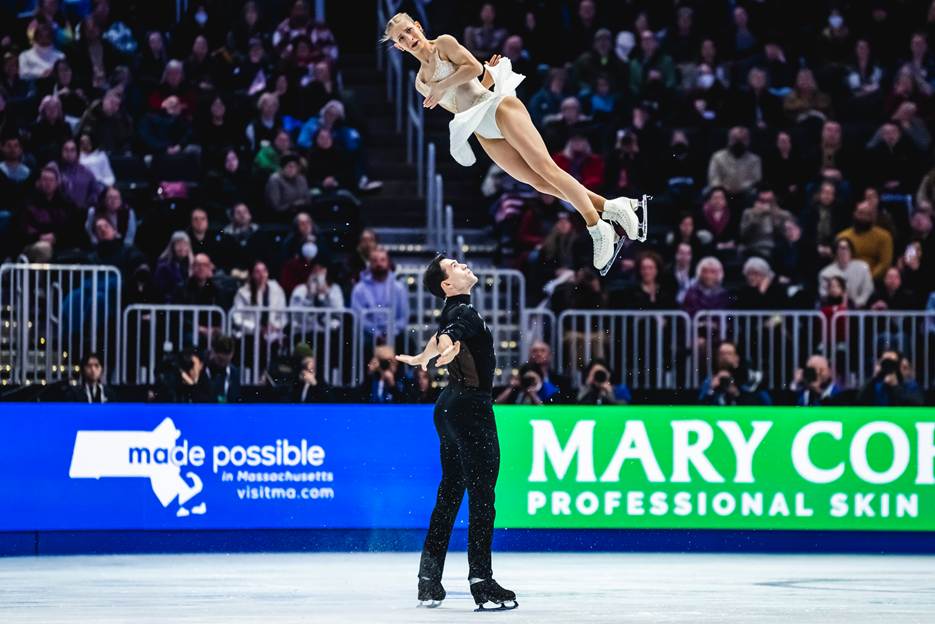
Minerva Hase & Nikita Volodin (GER) performing the twist at the ISU World Figure Skating Championships 2025 in Boston (USA) ©ISU
The Biellmann Spin
The Biellmann is one of the most striking spins in skating. Starting with a layback position, the skater pulls one leg up and behind their head into a full split while spinning - requiring incredible flexibility, core strength, and control.
It is mostly performed by women and often becomes a highlight of the routine. Done well, it looks fast, effortless, and beautifully stretched.
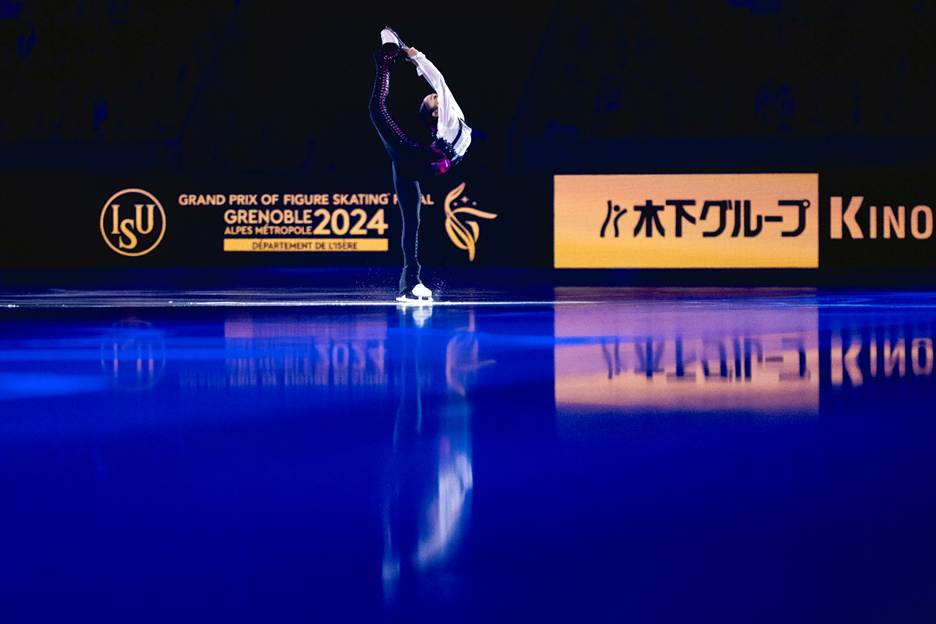
Mao Shimada (JPN) performing the Biellmann spin at the ISU Grand Prix Final 2024 in Grenoble (FRA) ©ISU
Fun Fact:
- Named after Denise Biellmann (SUI), who popularized the spin in the 1980s
Watch out:
- Alysa Liu (USA)
- Mao Shimada (JPN)
Both skaters are known for their world-class Biellmann spins with excellent speed and control.
The Step Sequence
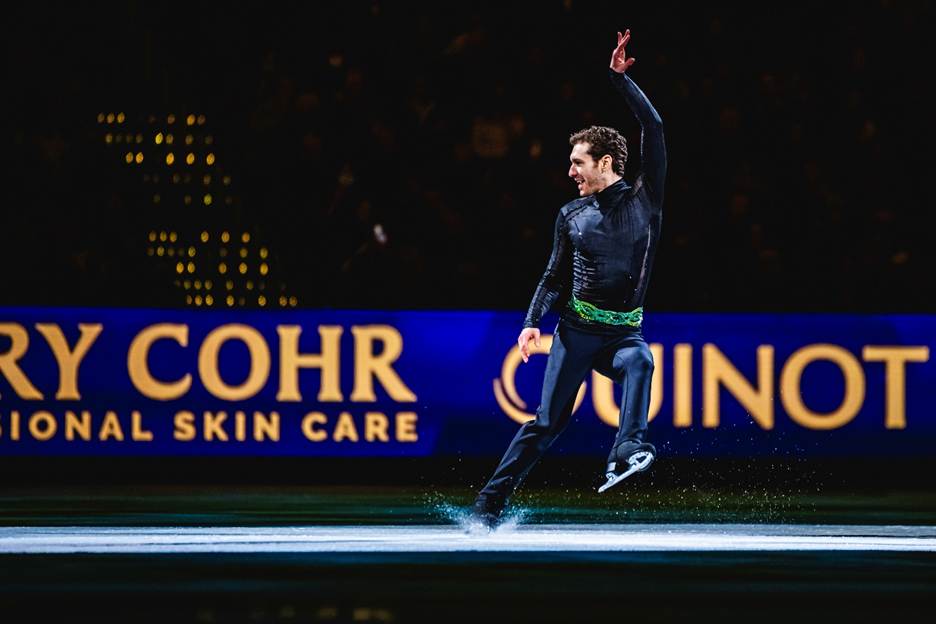
Jason Brown (USA) with iconic edge work performing the step sequence at the ISU World Figure Skating Championships 2025 in Boston (USA) ©ISU
This is where skaters show off their edge work and musicality. A step sequence weaves together a series of intricate turns and steps, flowing with the rhythm of the music and using the full body to express the choreography.
In Singles, it is a required element and often the emotional core of the program. In Pairs and Ice Dance, step sequences are performed side by side or in hold, with added complexity.
Great step sequences are fast, expressive, and full of character. Look for clean edges, dynamic movement, and deep connection to the music.
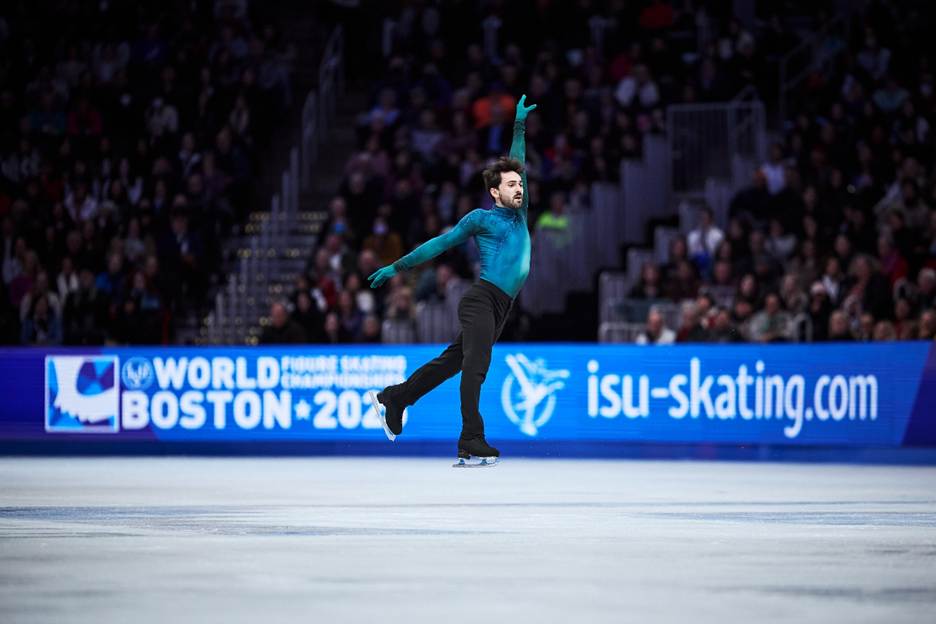
Kevin Aymoz (FRA) performing a hop during the step sequence at the ISU World Figure Skating Championships 2025 in Boston (USA) ©ISU
Now You are Ready to Watch Like a Pro
These five elements - the Axel, Salchow, Twist, Biellmann, and Step Sequence - are building blocks of Figure Skating. Each one combines technique with creativity, and once you know what to look for, the sport comes alive.
Next time you watch a program, see how many you can spot and enjoy the performance on a whole new level!
